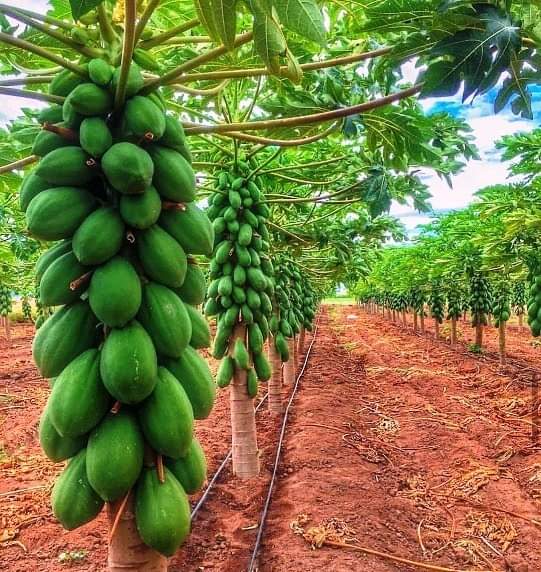Afimag.com –
The popular and nutritious plant, commonly found in Africa, India, United States and other parts of the universe declined a unique spelling, though, a similar pronunciation.
Papaya (US), Papaw, or pawpaw (West Africa) is the plant species Carica papaya which is one of the 21 accepted species in the genus Carica of the family Caricaceae.
According to Wikipedia, it was first domesticated in Mesoamerica, within modern-day southern Mexico and Central America. In 2020, India produced 43% of the world’s supply of papayas.
Naturally, ripe pawpaws are luscious with butter-like texture. Raw pawpaws along its seeds contain papain – an enzyme aids in digestion of proteins.
At fruit development stage, bitterness occurs as the plant underwent some stress as a result of nutrient deficiency, pests and diseases attack, such as mosaic or ring spot, inadequate water and unfavourable temperature.
However, for victorious fruit production, a few steps should be taken against the unfavorable circumstances. In the same development, the good taste of pawpaws lessen the low temperature areas. Nitrogen application is crucial in the fruit earnings, but excess application stimulates the level of papain.
Apart from nitrogen, phosphorus and potassium are also fundamental for better rendition of pawpaws. Fertiliser application should be done at six months to the time of fruit harvesting. Pawpaws also have different cultivars, thus, grafting increased disease and pest resistant rootstock with a scion of high fruit yielding with sweeter fruit qualities can also solve your problem.
Nonetheless, it is important to note that Papaya plants grow in three categories: male, female, and hermaphrodite. The male produces only pollen. It does not produce fruits. The female produces small, inedible fruits unless pollinated. The hermaphrodite can self-pollinate since its flowers contain both male stamens and female ovaries. Almost all commercial pawpaw orchards contain only hermaphrodites.
Originally from southern Mexico, particularly Chiapas and Veracruz, Central America, northern South America, and southern Florida, and West Africa, pawpaw is cultivated in most tropical countries. In its cultivation, it grows rapidly, fruiting within three years.
Temperatures below -2 °C (29 °F) are not good enough for growing pawpaw. In Florida, California, and Texas, growth is generally limited to the southern parts of those states. Sandy, well-drained soil are more preferable for growing pawpaw as standing water can kill the plant within 24 hours.
In Africa, A well-drained upland is selected for cultivation. In vacant and elevated lying regions, plants are exposed to strong winds and storms. Therefore, for proper establishment of pawpaw plantation, there should be measures to control excessive wind.
Planting Material
Pawpaw is commercially bred by seed and tissue culture plants. The seed rate is 250-300 g. The seedlings can be raised in nursery beds 3m. long, 1m. wide and 10 cm. high as well as in pots or polythene bags.
The seeds, after, being treated with 0.1% Monosan (phenyl mercuric acetate), ceresan etc. are sown 1 cm. deep in rows 10 cm. apart and covered with fine compost or leaf mould.
Light irrigation is provided during the morning hours. The nursery beds are covered with polythene sheets or dry paddy straw to protect the seedlings. About 15-20 cm. tall seedlings are chosen for planting in about two months.
Planting season
Pawpaw is planted during spring (February-March) or (June-July) and autumn (October-November) as it slight rainfall for growth.
Spacing
A spacing of 1.8 x 1.8 m. is normally followed. However higher density cultivation with spacing of 1.5 x 1.5 m./ha improve the returns to the farmer and is recommended.
High Density Planting
A closer spacing of 1.2 x 1.2 m. for cv. Pusha Nanha is adopted for high density planting, accommodating 6,400 plants/ha.
Planting Method
The seedlings are planted in pits of 60x60x60 cm. size. In the summer months the pits are dug about a fortnight before planting. The pits are filled with top soil along with 20 kg. of farmyard manure. 1 kg. neem cake and 1 kg. bone meal. Tall and vigorous varieties are planted at greater spacing while medium and dwarf ones at closer spacing.








